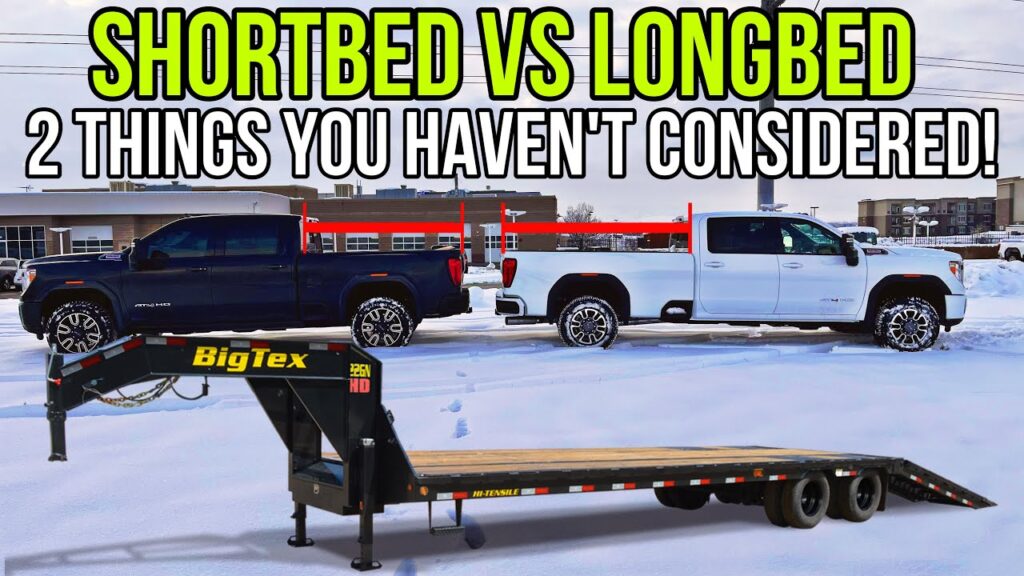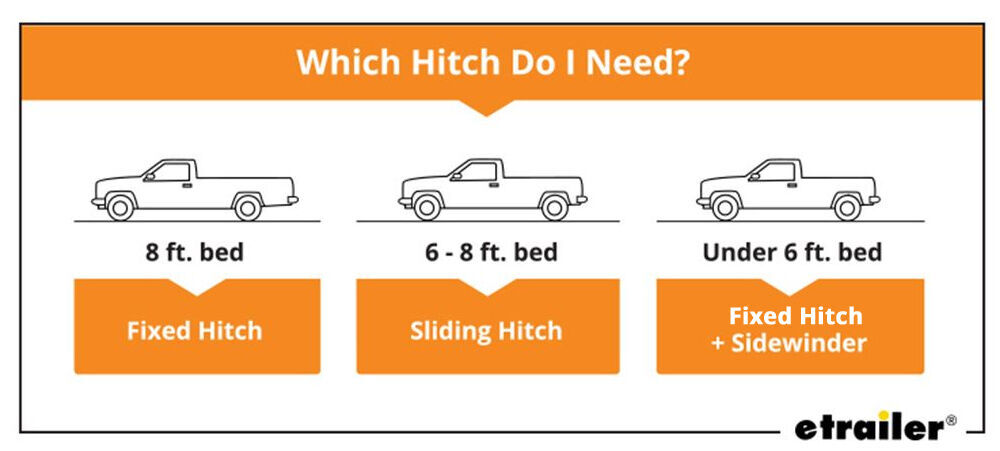When it comes to towing, selecting the right truck configuration is crucial. The debate between a short box and a long box often leaves individuals pondering which is the better option. While both have their advantages, understanding the specific needs and constraints of your towing requirements is key. In this article, we will explore the differences between a short box and a long box, and how each configuration can impact your towing experience. By the end, you will have a clearer understanding of which option may be better suited for your towing needs.

This image is property of i.ytimg.com.
Payload Capacity
Definition of payload capacity
Payload capacity refers to the maximum weight that a vehicle is designed to carry, including passengers, cargo, and any additional equipment. It is an essential factor to consider when choosing a truck for towing purposes. The payload capacity determines the amount of weight that can be safely loaded onto the truck’s bed without compromising its performance or safety.
Relation to towing
When it comes to towing, payload capacity plays a crucial role. In addition to the weight of the trailer itself, the payload capacity determines the amount of weight that the truck’s suspension, tires, and overall structure can handle. The payload capacity directly impacts the stability and maneuverability of the truck while towing, making it a critical factor to consider when making a decision between a short box and a long box.
Implications for short and long boxes
Both short and long boxes have different implications for payload capacity. Generally, long box trucks tend to have a higher payload capacity due to their larger size and increased usable space in the bed. With a longer box, there is more room to distribute the weight evenly and carry a heavier payload. On the other hand, short box trucks typically have a slightly lower payload capacity due to their smaller dimensions and reduced bed size. However, it’s important to note that the specific payload capacity can vary between different truck models and manufacturers.
Stability and Maneuverability
Center of gravity
The center of gravity is a key factor in determining the stability and maneuverability of a truck while towing. It refers to the point at which the vehicle’s weight is evenly distributed, and any changes to this distribution can impact its balance. When it comes to trucks, the center of gravity is influenced by various factors, including the payload weight and distribution, the overall height and weight of the vehicle, and the length of the box.
Effect on stability
The length of the box can significantly affect the stability of the truck while towing. Generally, longer boxes provide better stability due to the improved weight distribution. A longer box allows for a larger gap between the rear axle and the hitch point, resulting in better balance and reduced sway. This increased stability can enhance the overall towing experience and make it easier to navigate through various road conditions.
Effect on maneuverability
Maneuverability is another critical aspect to consider when deciding between a short box and a long box for towing. Shorter boxes offer better maneuverability due to their reduced overall length. They are easier to navigate in tight spaces, such as parking lots or congested urban areas. On the other hand, long boxes may present challenges in maneuvering, especially in narrow streets or limited turning areas. The longer bed length can make it more difficult to make sharp turns or execute precise maneuvers.
Comparison between short and long boxes
In terms of stability and maneuverability, the choice between a short box and a long box ultimately depends on individual preferences and the specific towing needs. Short boxes offer improved maneuverability, making them a suitable choice for those who frequently tow in urban areas or where tight spaces are common. On the other hand, long boxes excel in stability, making them a better option for highway towing or situations where a higher payload capacity is required.

This image is property of www.etrailer.com.
Towing Performance
Weight distribution
Weight distribution is crucial for optimal towing performance. Proper weight distribution ensures that the load is evenly distributed between the truck and the trailer, allowing for safe and controlled towing. When considering the choice between a short box and a long box, it’s important to assess how the weight distribution will be impacted and how it can influence the overall towing performance.
Effect on towing performance
The length of the box can have a direct effect on the towing performance of a truck. Longer boxes allow for better weight distribution, as the load can be positioned further back from the rear axle. This helps maintain a more balanced and controlled towing experience, reducing the risk of swaying or uncontrollable movements. Short boxes, due to their smaller size, may require more careful positioning of the load to ensure optimal weight distribution and towing performance.
Comparison between short and long boxes
When comparing the towing performance of short and long boxes, it’s important to consider the specific towing requirements and conditions. While long boxes generally offer better weight distribution and towing stability, short boxes can still provide satisfactory towing performance with proper load positioning and weight distribution techniques. Ultimately, the towing performance depends on factors beyond just the box length, such as the truck’s suspension, engine power, and towing capabilities.
Bed Length
Definition of bed length
Bed length refers to the measurement from the inside front wall of the truck’s bed to the inside rear wall. It determines the usable space for cargo and towing equipment and plays a significant role in determining the overall functionality and capabilities of the truck. Bed length is a vital consideration when choosing between a short box and a long box, as it directly impacts the hauling capacity and versatility of the vehicle.
Importance for towing
Bed length is crucial for towing purposes as it affects how much space is available to secure and accommodate the trailer hitch. A longer bed length provides more room for the hitch and allows for better weight distribution, reducing the chances of swaying or instability during towing. Additionally, a sufficient bed length ensures that the trailer and the truck maintain the necessary clearance and prevent any contact or damage while maneuvering.
Advantages of short boxes
Short box trucks offer some advantages when it comes to towing. Their compact size makes them easier to maneuver in tight spaces and parking lots. Additionally, short boxes tend to have a shorter turning radius, allowing for easier navigation through narrow streets or when making sharp turns. Despite having a slightly lower payload capacity, short boxes can still handle most towing needs while providing better everyday drivability and versatility.
Advantages of long boxes
Long box trucks offer several advantages for towing purposes. Their extended bed length allows for better weight distribution and stability, especially when towing larger trailers or heavier loads. The additional space in the long bed provides more room to secure and organize the cargo, ensuring a safer and more controlled towing experience. Long boxes are particularly beneficial for long-distance highway towing or situations where a higher payload capacity is required.

This image is property of i.ytimg.com.
Turn Radius
Definition of turn radius
Turn radius refers to the smallest circle that a vehicle can make while fully turning its front wheels. It determines the space and maneuverability required to execute turns, especially in limited or congested areas. When considering the choice between a short box and a long box, the turn radius becomes an important factor, as it can greatly impact the ease of towing and overall maneuverability of the truck.
Relation to towing
Turn radius is closely related to towing, as it directly affects the ability to navigate through various road conditions and parking scenarios. A larger turn radius can limit the truck’s ability to make sharp turns or navigate narrow streets, while a smaller turn radius provides greater flexibility and ease of maneuvering. When towing, it’s important to consider the specific turning needs and conditions to ensure a safe and hassle-free towing experience.
Comparison between short and long boxes
Generally, short boxes have a smaller turn radius compared to long boxes. The reduced overall length of the truck allows for tighter turns and better maneuverability, especially in urban areas or when parking in congested spaces. Long boxes, due to their extended length, may require more careful planning when executing turns, particularly in situations where space is limited. However, it’s important to note that the turn radius can also vary based on other factors such as the truck’s wheelbase and steering system.
Fuel Efficiency
Effect of box length on fuel efficiency
The length of the box can have an impact on the fuel efficiency of a truck, especially when towing. Longer boxes tend to have a slightly lower fuel efficiency compared to shorter boxes. The increased size and weight of the long box can result in additional aerodynamic drag, requiring more power and fuel consumption to maintain the same speed. However, the difference in fuel efficiency between short and long boxes is usually minimal and may vary depending on various other factors such as the truck’s engine and transmission.
Considerations for towing
When considering fuel efficiency for towing, it’s important to assess the specific towing needs and conditions. While longer boxes may have a slightly lower fuel efficiency, they often offer better stability and payload capacity, making them suitable for heavier towing requirements. Shorter boxes, with their improved maneuverability and potentially better fuel efficiency, are ideal for those with lighter towing needs or who prioritize everyday drivability over maximum towing capabilities.
Comparison between short and long boxes
When comparing the fuel efficiency of short and long boxes, the difference is typically minimal. Modern trucks are designed to optimize fuel consumption, regardless of the box length. The impact on fuel efficiency is generally outweighed by other factors such as engine efficiency, vehicle weight, and driving habits. Therefore, it’s essential to consider the overall towing needs, payload capacity, and maneuverability when making a decision between a short box and a long box, rather than solel

This image is property of drivinvibin.com.
